Shaker cherry trestle table with leaves

Cherry trestle table similar to a birdseye table I posted 4/21/09, except for the leaves. This table is 72″ long, but it sometimes needs to be 90″ long. Providing support for the leaves meant adding metal brackets that cannot be seen unless you crawl under the table.
The table was built during the very wet September 2011, pushing the cherry’s moisture content to 13% and making the top about as wide as it will ever get. As a result, in these photos each side of the top sits proud of the breadboard ends by about 1/8″. Calculations indicate annual movement of about 9/16″ in Wellesley, MA where the table now resides. Hopefully the movement will balance properly year round.
For dining table durability, the top was finished with four brushed-on coats of urethane, followed by several coats of hand rubbed oil and varnish. Between coats, wet sanding with 600 paper and further burnishing with two grades of pumice made for a super smooth surface.

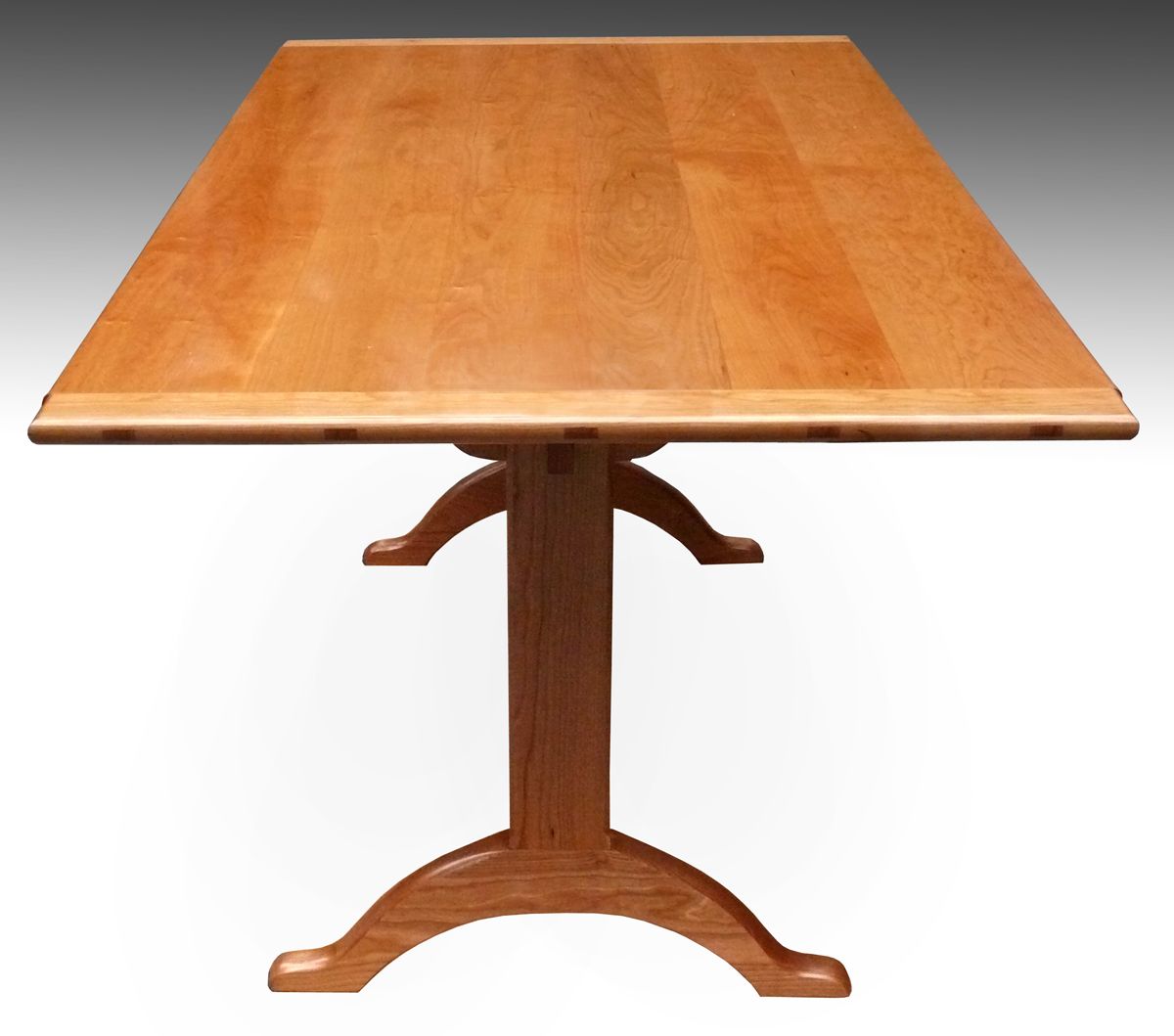
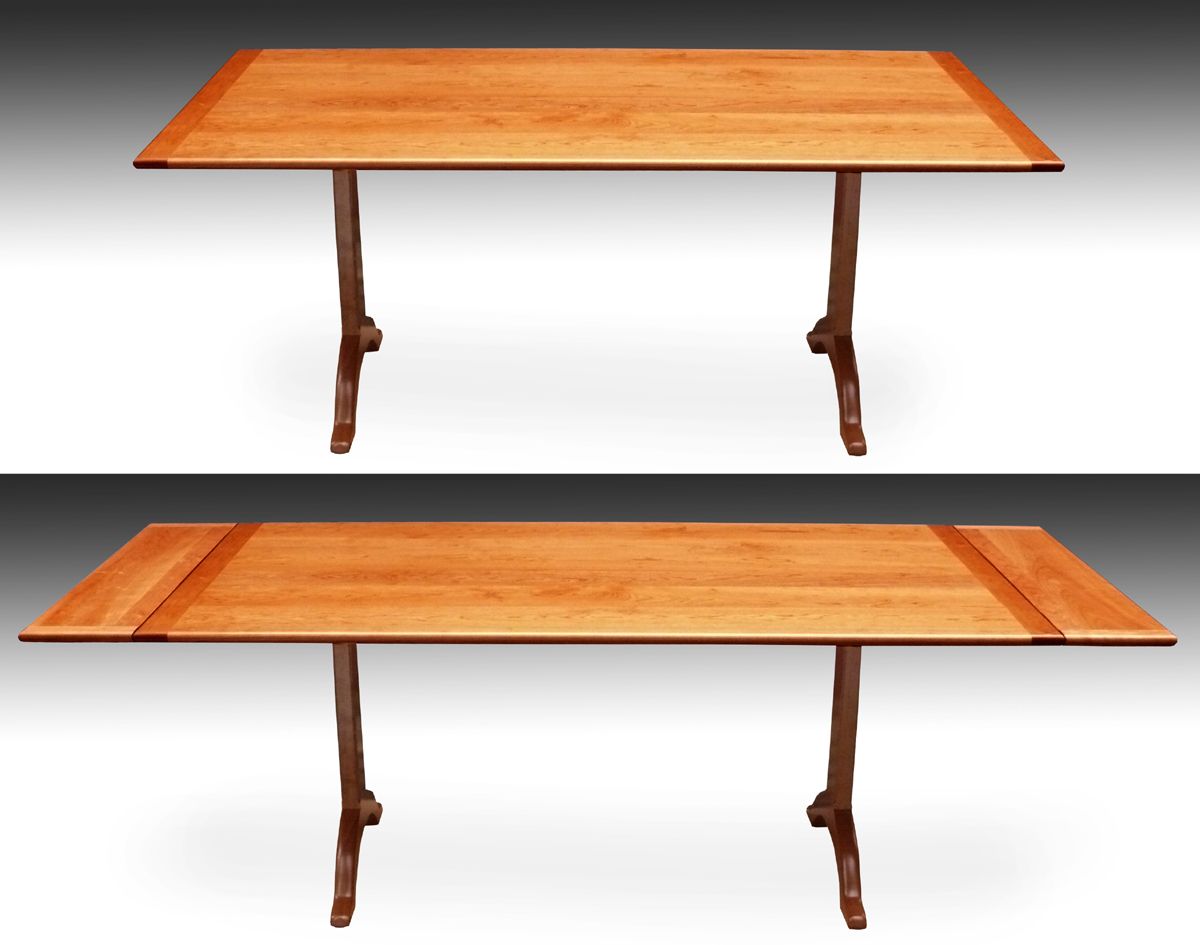
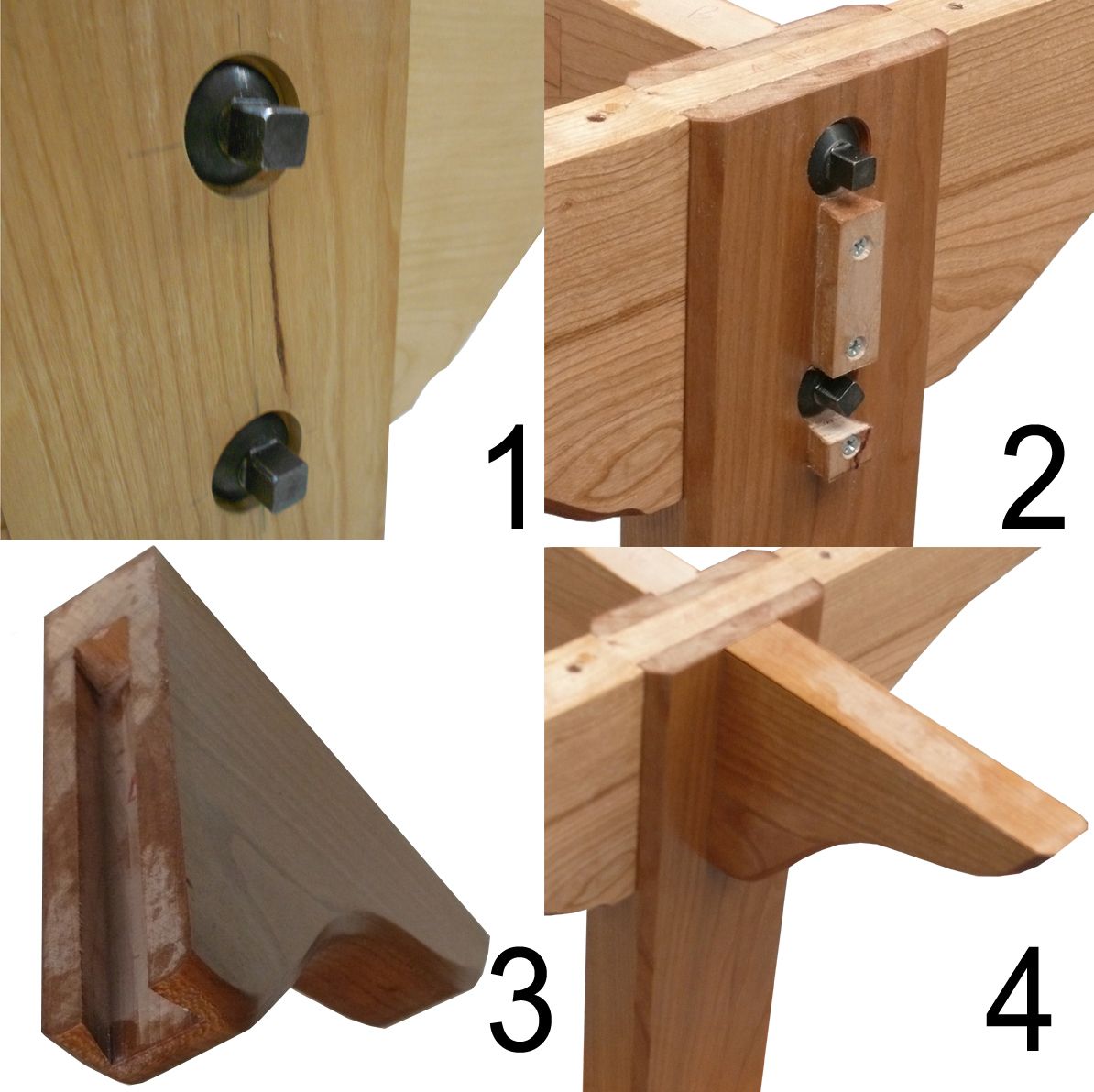
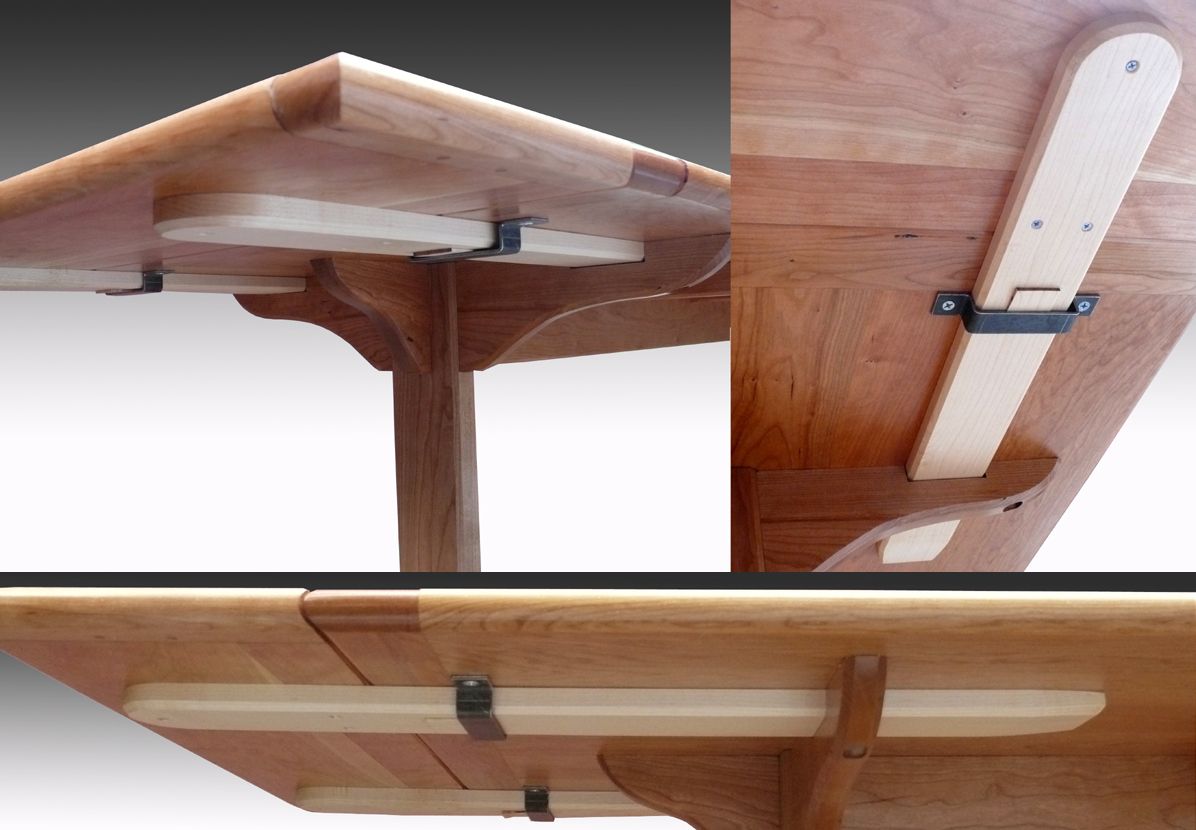
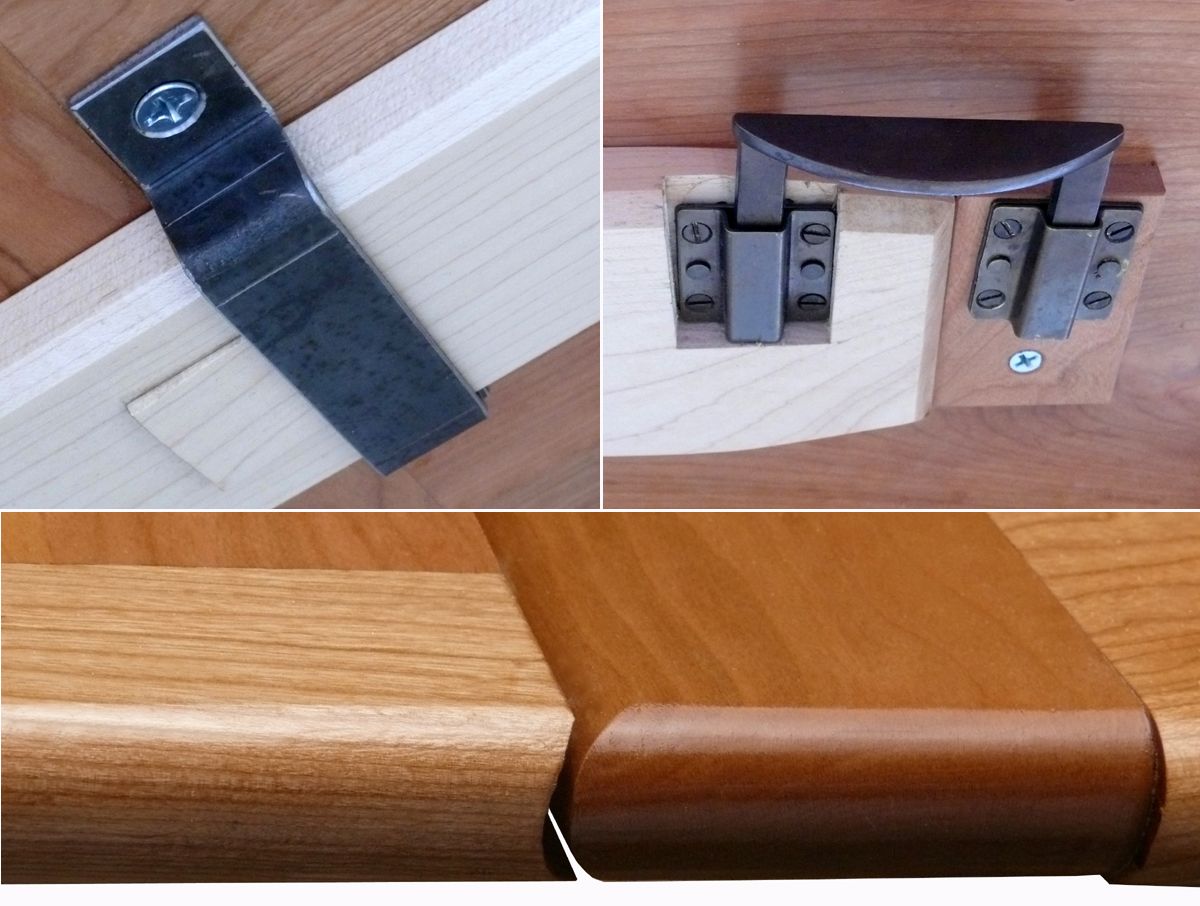
















Comments
Very nice Charles - I really like the way you solved the "ugly hardware" issue.
Log in or create an account to post a comment.
Sign up Log in